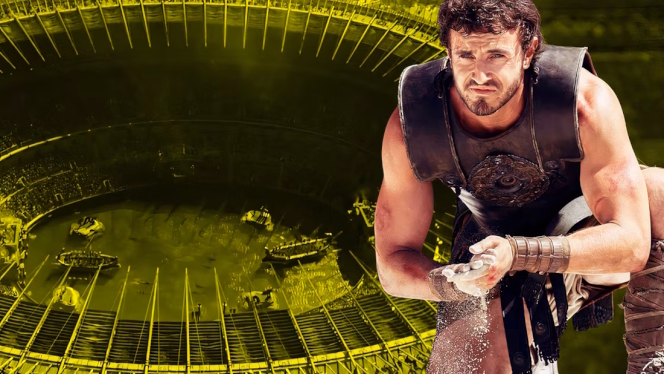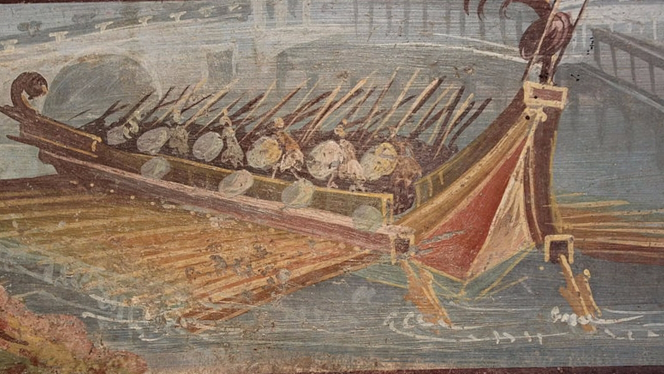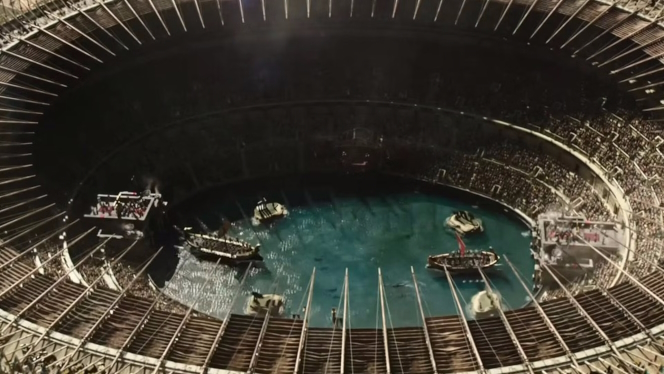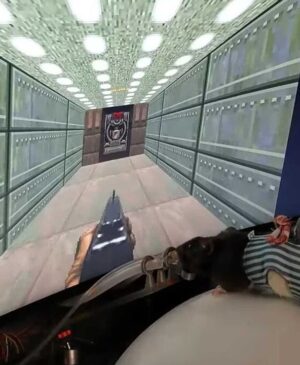MOVIE NEWS – Ridley Scott wanted to top everything in the first movie with Gladiator II, and the idea of staging a sea battle in the Colosseum gave him the idea. But this idea does not come from Scott, but from the Romans themselves…
Gladiator II, Ridley Scott’s long-awaited sequel to 2000’s Gladiator, is coming soon. In the leading roles, we will see Denzel Washington, Pedro Pascal, and Paul Mescal. Mescal plays Lucius Verus, grandson of Marcus Aurelius and heir to the empire. Lucius is captured in Numidia (North Africa), enslaved by the Roman general Marcus Acacius (Pascal), and eventually forced to fight as a gladiator in the Colosseum.
Mentored by Macrinus (Washington) in the Colosseum, Lucius’ exploits demonstrate the brutality of gladiatorial combat. Based on the trailer, the film also features scenes that recreate other uses of the Colosseum, namely naval battles.
Were mock sea battles really staged in the Colosseum?
According to the website of the Roman Colosseum, the mock sea battle, or naumachia (plur. naumachiae) in Latin, was an event held on special occasions. The earliest naumachiae did not occur in a massive structure like the Roman Colosseum (officially known as the Flavian Amphitheater), but on lakes, rivers, or low-lying areas flooded with water.
Julius Caesar is said to have B.C. In 46, to celebrate his return to Rome, he held a mock sea battle, the excitement of which was described by the Roman historian Suetonius:
“For the naval battle a pool was dug in the lesser Codeta and there was a contest of ships of two, three, and four banks of oars, belonging to the Tyrian and Egyptian fleets, manned by a large force of fighting men. Such a throng flocked to all these shows from every quarter, that many strangers had to lodge in tents pitched in streets or along the roads, and the press was often such that many were crushed to death, including two senators.” (Suet. Vit. Caes. I. Iul. Caes. 39. 4)
In the first century A.D., the emperors Augustus, Nero, and Titus held naumachiae, some of which were held in amphitheatres built for the event. Titus, specifically, reportedly held two naumachiae in A.D. 80 to celebrate the Colosseum, one in the structure itself:
“At the dedication of his amphitheater and of the baths which were hastily built near it he gave a most magnificent and costly gladiatorial show. He presented a sham sea-fight too in the old naumachia, and in the same place a combat of gladiators, exhibiting five thousand wild beasts of every kind in a single day.” (Suet. Vit. Caes. VIII. Titus 7. 3)
In order to stage naval battles in the Colosseum, the Romans had to flood the structure and bring in ships.
Roman aqueducts were used to carry water from water sources to the structure. However, it remains unclear which aqueducts were used for the various naumachiae. When Augustus AD In 2, he held his naumachia on the Tiber River, using excess water from nearby gardens.
It is also unclear how much water would have been used for amphitheatre-like water battles such as the one held by Emperor Domitian in the Colosseum in around A.D. 85. The arena of the Colosseum is roughly 86 x 54 meters. The depth of the water could reach up to 150 centimetres, but pumping the water in and out took quite a lot of time.
The prevailing theory is that a removable wooden floor covered the water until it had to be used in the Colosseum. The one in Merida, Spain, dating from A.D. There is a pool under the amphitheatre floor consecrated in the first century. This clearly indicates that the water was brought in and out by means of aqueducts and canals.
Ridley Scott wanted bigger than ever with Gladiator II
The outcome of the naumachia, involving three- (triremis) and four-row (quadriremis) galleys full of prisoners of war, meant life and death for many more people than a single gladiator fight. Titus, for example, deployed 3,000 men during one of his naumachiae. When Emperor Claudius held a naumachia in a lagoon by the Tiber River, 19,000 people were said to have attended!
The spectacle of naumachia was one of the things Ridley Scott spent the massive budget of Gladiator II on. Scott told Empire in July 2024 that computers and artificial intelligence allowed him to create bigger than ever before in the film’s battle scenes.
Scott’s exaggerated presentation of the naval battle is not as far-fetched as it seems when more of Claudius’s naumachia is considered. Like his predecessors, Claudius used ordinary galleys, but Tacitus has more to say about the battle itself in the Annales:
“The battle, though one of criminals, was contested with the spirit and courage of freemen; and, after much blood had flowed, the combatants were exempted from destruction.” (Tac. Ann. XII. 56.)
In addition, rafts were brought so that the warriors could not escape, and people from the surrounding area gathered to watch the battle from the hills above the lake or from boats. It was an unusual sight, a once-in-a-lifetime experience, attended by tens of thousands of people, served with regal splendour…
(Gladiator II – domestic release: November 14, 2024)
Source: Colosseum.org, Empire, LacusCurtius (1, 2)

















Leave a Reply